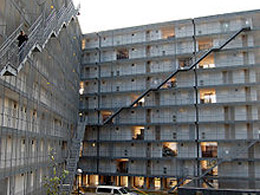Remember the outrage when Zaha declared that workers dieing on her projects in Qatar had nothing to do with her? Or when her loyal lieutenant Patrik Schumacher took to Facebook with his inane rant: "Architecture is not politics not art not science not
engineering. It is the design of communicative spatial form....what we communicate....is NOT up to the architects"?
In this blog at the time I joined the incredulity. But I almost feel like an apology to those two, having come across an earlier declaration by Peter Eisenman in an interview by David Basulto on ArchDaily in 2011:
In this blog at the time I joined the incredulity. But I almost feel like an apology to those two, having come across an earlier declaration by Peter Eisenman in an interview by David Basulto on ArchDaily in 2011:
I don’t think that architecture is about solving human problems at all. Psychologists solve human problems, sociologists solve human problems, economists solve human problems. We’re none of those things. We do culturally necessary projects, which have a value for the culture in general. What should the architect do in society? I don’t think the architect should do anything, frankly”.





